
All categories
Featured selections
Trade Assurance
Buyer Central
Help Center
Get the app
Become a supplier

(13536 products available)
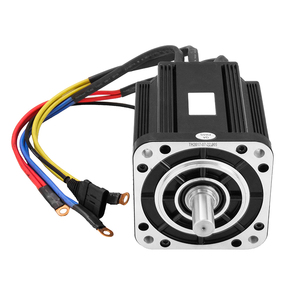
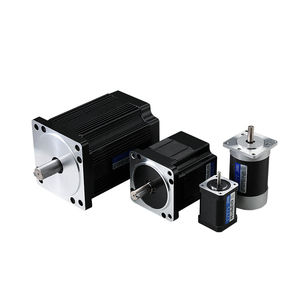


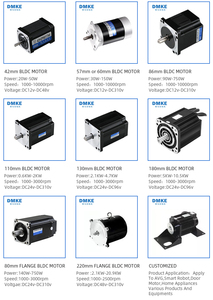


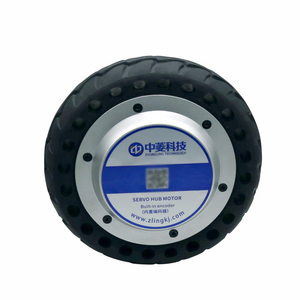



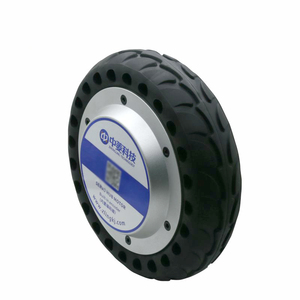












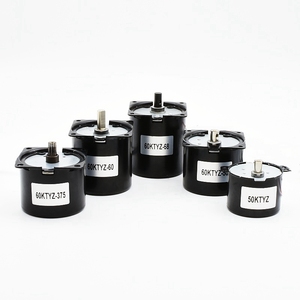



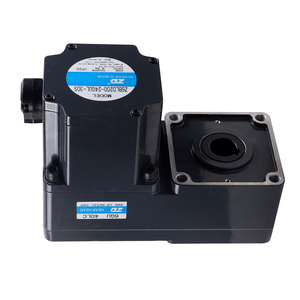
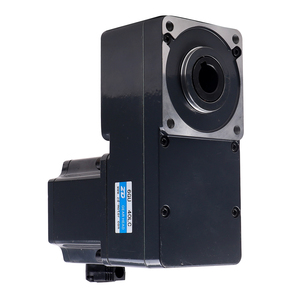









High voltage DC motors come in various types. These are some of the most prominent.
Brushed DC motors comprise an armature, brushes, and a commutator. The brushes which are usually made of carbon conduct the current to the rotating part (armature). This type of DC motor is easy to control and offers a simple design. However, the brushing mechanism leads to maintenance needs and reduced lifespan in comparison to other types. Due to their simplicity, brushed DC motors are widely used in low to moderate power applications.
Brushless DC motors come with an electronic commutation system as opposed to the mechanical one used in brushed motors. It mainly uses permanent magnets on the rotor and a series of electromagnetic coils on the stator. The absence of brushes reduces friction. The low level of friction reduces heat generation. Less friction also results in a longer operational life and minimal maintenance needs. One of their most recognizable traits is their high efficiency and performance. Due to these traits, brushless motors are widely used in high power applications. These include aerospace, electric vehicles, and industrial machinery.
In a series-wound motor, the field winding is connected in series with the armature. This means that the entire current flowing through the motor also passes through the field winding. Thus, this configuration produces a strong magnetic field that increases the motor's torque when the current increases. This helps in heavy loads or under starting conditions. As such, they are ideal for applications requiring high starting torque, like electric traction systems or cranes. However, their speed regulation is poor.
In parallel-wound DC motors, the field winding is connected in parallel (shunt) with the armature. This setup leads to a more constant speed regardless of the load. Shunt motors provide moderate torque and are less robust than series-wound motors under heavy load conditions. They are widely used in applications where speed consistency matters. These include fans, pumps, and conveyor belts.
Compound-wound motors combine features of both series and shunt types. In a motor, some part of the field winding is connected in series with the armature (segmented field). Part of the field winding is connected in parallel with the armature (shunt field). This configuration aims to leverage the advantages of both systems. There are two types of compound motors. These are short-shunt and long-shunt motors. Short-shunt motors have only one part of the field winding connected in series. Meanwhile, long-shunt motors have both the series and shunt windings. Compound motors provide good torque and speed regulation.
High voltage DC motors have multiple commercial uses. They include these.
High-voltage DC motors are found in the aerospace industry. They power critical systems in electric aircraft and spacecraft propulsion, landing gear systems, and auxiliary power units. These high-efficiency, lightweight motors offer reliable performance in the high-voltage DC environment found in aviation.
High voltage DC motors influence the electric vehicle industry. They power vehicle propulsion systems, offering smooth torque delivery and efficient energy conversion. These motors handle the high voltage from the EV batteries. This enables longer ranges and faster charging. Moreover, they are an integral part of battery-operated electric cars' driving dynamics and performance.
High voltage DC motors are critical to the metal processing industry, with electrolysis being a key process to the industry. The motors provide the necessary drive for electrolysis cells, which deposit metal coatings, regenerate spent solutions, andextract pure metals from ores. They also drive other equipment used in this process.
Mining relies on high-voltage DC motors to power electric drive systems in underground vehicles. These motors provide the torque and reliability necessary for hauling, drilling, and other demanding applications. As mining practices move toward electrification, the role of high-voltage DC motors in powering battery electric underground mining equipment also grows.
High-voltage DC motors play a key role in renewable energy systems. These motors convert the generated DC power from sources like wind turbines into usable AC power for the grid. As renewable energy becomes more prevalent in power generation, the demand for these motors in wind and solar power systems increases.
High Voltage BDC motors are critical in industrial equipment, especially where high efficiency and reliability are necessary. These motors power machinery like pumps, compressors, and fans. They are preferred in industries such as chemicals, oil and gas, and manufacturing due to their durability and ability to handle harsh conditions.
Voltage Ratings
High-voltage DC motors handle a wide voltage range. Typically, they go from hundreds to several thousand volts. This high voltage enables operation in demanding industrial environments and efficient power transmission over long distances. The specific voltage rating depends on the intended application. For example, EVs tend to be at the lower end of the range. Meanwhile, renewable energy systems often need higher voltages.
Power Output
The power output of these HVDC motors can vary widely. Types of high-voltage DC motors are available in outputs that range from a few kilowatts to several megawatts. This flexibility allows for use in commercial applications ranging from small machinery in factories to large-scale operations like mining and steel manufacturing. In these applications, they power heavy-duty equipment.
Torque Characteristics
High-voltage DC motors are renowned for their high torque. Not only do they have high torque, but they also maintain excellent torque at varying speeds. This feature enables them to deliver consistent and powerful performance in dynamic load conditions. Such feature makes them ideal for heavy industrial applications where precision and reliability are critical.
Speed Range
These high-voltage motors exhibit a broad speed range. Commonly, their speeds vary from hundreds to several thousands of revolutions per minute (RPM). The specific speed range required largely depends on the application in question. For instance, in electric vehicle propulsion systems, higher speeds are necessary for optimal performance. Conversely, in industrial applications, lower speeds provide more control over heavy-duty machinery operations.
Safety Precautions
Users should always prioritize safety when handling high voltage DC motors. High voltages come with inherent risks. So, always wear protective gear like insulated gloves and safety glasses. Ensure that any power sources are fully de-energized. This means there is no electrical current running through the system before starting the installation. Users should follow guidelines from manufacturers for grounding procedures. This will reduce the risk of electric shocks.
Mounting the Motor
Securely mount the high-voltage DC motor in the designated location. Ensure the mounting platform is stable and can handle the weight and vibrations generated by the motor during operation. Use the provided mounting brackets and fasteners to correctly install the motor. Confirm that the motor is aligned properly with connected equipment like drive shafts or gears.
Electrical Connections
Carefully connect the power leads to the motor terminals. Each terminal has a specific voltage designation. So, refer to the user manual for guidance. Properly insulate all connections to prevent electrical hazards. Implement measures that ensure there is no moisture or debris in the connections to maintain efficient electrical conductivity.
Mechanical Connections
After the electrical connections, connect the motor to the mechanical systems it will drive. This includes linkages, belts, or gear systems. Ensure that all mechanical connections are secure and properly lubricated. Check that there is no undue strain on motor components, which could lead to motor damage.
Testing
Once all electrical and mechanical connections are in place, users need to conduct a test run. Gradually apply power to the motor and observe its operation. Be on the lookout for any unusual noises, vibrations, or overheating. Conducting these tests will help users identify and fix potential issues long before going full throttle with the motor.
Regular Inspections
Users should perform weekly visual checks to spot any obvious issues. These are things like wear, damage, or corrosion. Monthly checks should also include looking at the electrical connections for problems like loosening or corrosion. As for quarterly inspections, users should use specialized tools to check alignment, vibration, and overall motor condition. This is a more in-depth evaluation.
Lubrication
Users should always stick to the manufacturer's recommendations when it comes to lubrication. They should do both type and quality checks on the lubricant. Ensure that only the right lubricant is used and that it is in good condition. This means that it is not contaminated. User should also ensure they lubricate all bearings and moving parts. Make sure there is ample lubrication to reduce friction, but avoid oversaturating as this can result in a mess and attract dirt to the motor.
Cooling System Maintenance
Always ensure the cooling system is working optimally. It should be effective and free from blockages. Check for any leaks or damage in the cooling lines or radiators. Also, users need to ensure there is the right coolant level and quality. If the coolant is dirty or low, replace or top it up as soon as possible.
Brush and Commutator Care
Brushed motors require additional attention. Visibly check the brushes for wear and replace them when necessary. Always keep the commutator clean. A dirty commutator causes sparking and even brush damage. Clean it using a soft, non-abrasive cloth together with a commutator cleaner.
Replacement of Worn Parts
Users need to replace all worn-out parts promptly. This includes brushes, bearings, and any signs of cracks or wear in gears. Always use OEM (Original Equipment Manufacturer) parts to guarantee compatibility and maintain the motor's warranty.)
High Power and Efficiency
The high voltage enables these motors to handle substantial power levels. The high power means that they can do heavy work fast. They are energy efficient when transmitting power over long distances compared to AC motors. This leads to lower energy costs and reduced operational expenses. This is why users will find these motors commonly used in industrial applications like chemical processing and metal smelting.
Precision Control
These motors have robust speed control capabilities. This allows fine adjustments in speed and torque. The precision control makes them ideal for applications that require careful operation, such as robotics and aerospace systems. These high precision is a distinguishing factor that sets them apart from AC motors.
Compact Design
There is the benefit of electrical design in these motors. This allows them to have a smaller footprint compared to equivalent AC motors. The compact size makes high voltage DC motors suitable for space-sensitive applications. Such applications include electric vehicles or medical equipment. This space saving feature is an advantage over traditional AC induction motors.
Less Maintenance
Brushless high-voltage DC motors have no brushes. The absence of brushes reduces wear and tear. This translates to minimal maintenance requirement. Less maintenance comes with high reliability. This is particularly advantageous in remote or critical applications where maintenance access is difficult.
Costly
These high-voltage systems tend to be more expensive than standard AC motors. Their complexity and high power electronics add up to the overall costs. This presents budget considerations for potential users. They will need to assess cost versus benefits before purchasing these systems.
Safety Concerns
These high voltages can increase the risk of electric shocks or equipment damage if there is poor insulation or protective measures. Proper safety protocols are essential to mitigate risks. Unfortunately, these precautions can complic installation and operating procedures.
Control Complexity
The control systems for these motors can be sophisticated, requiring advanced technology and expertise to manage their operations effectively. This control complexity demands specialized knowledge. It makes the motors less accessible for businesses that do not have the know-how.
Heat Generation
High-voltage DC motors generate more heat compared to AC counterparts, especially under heavy loads. This necessitates efficient cooling systems. Failure to cool them effectively causes performance degradation. In fact, in worse case scenarios, there is total motor failure.
A1. The key difference between high-voltage brushed and brushless DC motors lies in their commutation methods. The former uses brushes and a mechanical commutator for current transfer to the motor windings. On the other hand, brushless motors use electronic commutation with the help of sensors. This makes them more efficient and less wear and tear occurs. There is also less maintenance in brushless motors due to the absence of brushes. It is also worth noting that brushless motors have better performance and longer operational life. These traits come in handy due to the increased efficiency and reduced heat generation.
A2. Yes. High-voltage DC motors can operate outdoors. However, buyers should consider their environmental conditions. High-voltage DC motors have weatherproof designs which make them suitable for outdoor use. Users should ensure these motors are properly housed or protected from extreme temperature, humidity, or dust. Outdoor high-voltage DC motors are widely used in renewable energy applications like wind and solar power as well as in electric vehicles.
A3. High-voltage DC motors usually demonstrate higher efficiency levels in specific applications when compared to AC motors. This is particularly true when it comes to power transmission over long distances or in variable load conditions. Furthermore, high-voltage DC motors have superior torque-speed characteristics, making them efficient in high-load scenarios. Conversely, AC motors are generally more efficient for large industrial use.
A4. High-voltage DC motors play a vital role in electric vehicle propulsion systems. They help to convert battery-stored electrical energy into mechanical movement. These motors handle the high voltages that come with fast charging. They also increase the vehicle's range and performance, making them essential components in modern electric cars.
A5. The efficiency of these high-voltage motors largely depends on how well they are controlled. One can improve the efficiency of these motors by adopting advanced control techniques. These techniques include using variable speed drives, optimizing the load conditions, and minimizing parasitic losses.